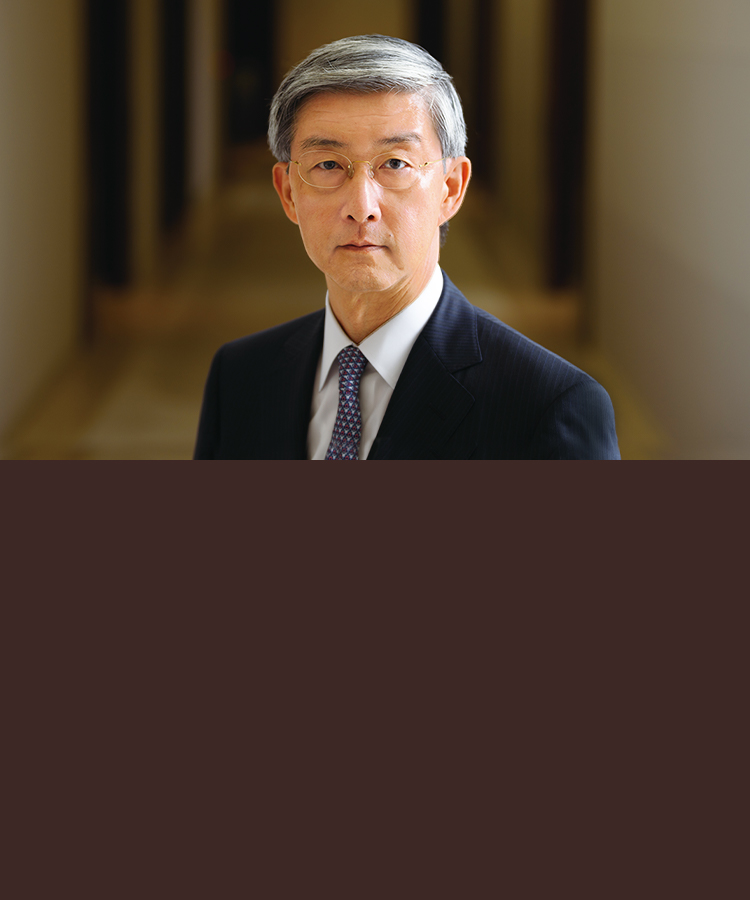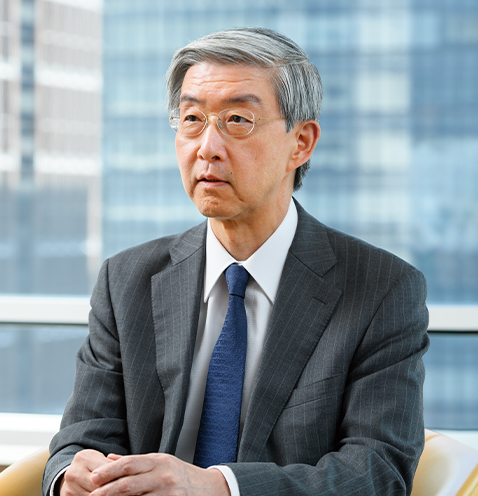
With the second year of Midterm Corporate Strategy 2021 having come to an end, how would you evaluate the progress of the Value-Added Cyclical Growth Model presented in the strategy?
A. The Value-Added Cyclical Growth Model is continuing to permeate within the Company, and we have replaced assets of about 1 trillion yen over two years, including capital gains.
In the past, the term "investment for growth" was used, with the notion that if you do not invest, you will not grow, and that if you do invest, you will make a profit. However, since two years ago, we have been communicating internally to fundamentally change this way of thinking. Against this backdrop, we have been seeing an increase in "brown field" projects. "Green field" projects, through which businesses are cultivated from scratch, can have large yields when successful, and expanding investment and achieving growth have been seen as two sides of the same coin. However today, as the market matures and liquidity increases, these types of projects are decreasing. Instead, "brown field" projects are on the rise, and while their risk levels are comparatively low because they involve entering the market after the business has progressed up to a certain point, they also require payment of a reasonable premium for entry, which lowers the investment yield. To compensate for this decrease, earning capital gains through divestment becomes the key to success. In other words, at the stage where there is low potential for further growth from our involvement in a particular business, even if it is profitable, we will divest and recover our investment funds to reinvest new growth sectors. Within this cycle, what is important is to steadily accumulate capital gains.
In order to promote this value-added cycle, in addition to having each Business Group set divestment targets, we have compiled a list of projects with slower growth trajectories as candidates for divestment and requested the Business Groups to determine which ones to sell in order to achieve those targets. This policy is permeating widely, and we have carried out asset replacements amounting to approximately 1 trillion yen over two years, including capital gains.

In light of the results for the fiscal year ended March 31, 2021, will MC be changing its capital allocation or investment strategy?
A. Our basic policy remains unchanged, and we are strengthening cash flow management based on rigorous financial discipline.
Since our current management system was put in place in the fiscal year ended March 31, 2017, we have adhered to a basic policy of paying progressive dividends within the scope of adjusted free cash flow and have not raised interest-bearing liabilities. To ensure financial soundness, we set 40-50% as the appropriate range for the investment leverage ratio (ratio of total capital covered by investment balance), but at the end of the fiscal year ended March 31, 2021, this ratio had risen above the appropriate range to 54%. This was mainly a result of an investment balance that grew quite large due to large-scale investments such as the acquisition of Eneco, followed by a significant decrease in consolidated net income, leading to a decline in capital augmentation. As a result of restrictions on net investment, through continued promotion of proactive asset replacement and a recovery in consolidated net income, we are endeavoring to restore the leverage ratio to its appropriate range by the end of the fiscal year ending March 31, 2022. Moreover, with restrictions in place on net investment, we are seeking for the necessary funds for investment to be generated through revenues from the sale of existing assets. As such, from a financial discipline perspective, we are supporting the promotion of the Value-Added Cyclical Growth Model.
In addition, although MC is focusing on digital transformation (DX) and energy transformation (EX) as key issues for the future, this will not involve directing extreme amounts of funding toward specific areas. It could be said that one of MC's strengths is that it develops businesses across a diverse range of industries, providing opportunities to discover New Seeds of Growth in a wide variety of fields. The key to whether we succeed or fail will be how well we can carefully select the best projects from among these, we will execute investments as a result of this selection process. Without changing our capital allocation or investment strategy, we will continue to move forward based on rigorous financial discipline.





